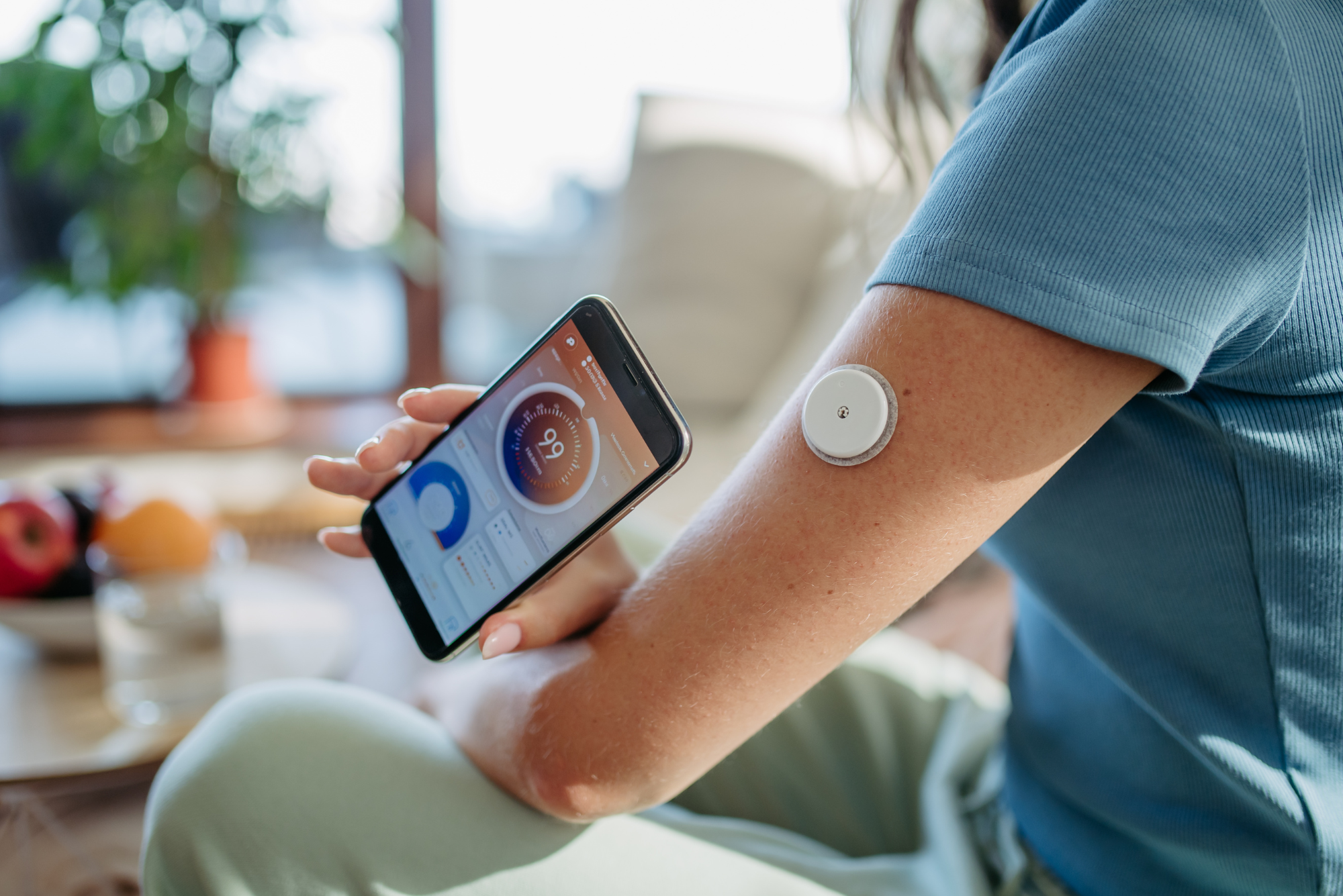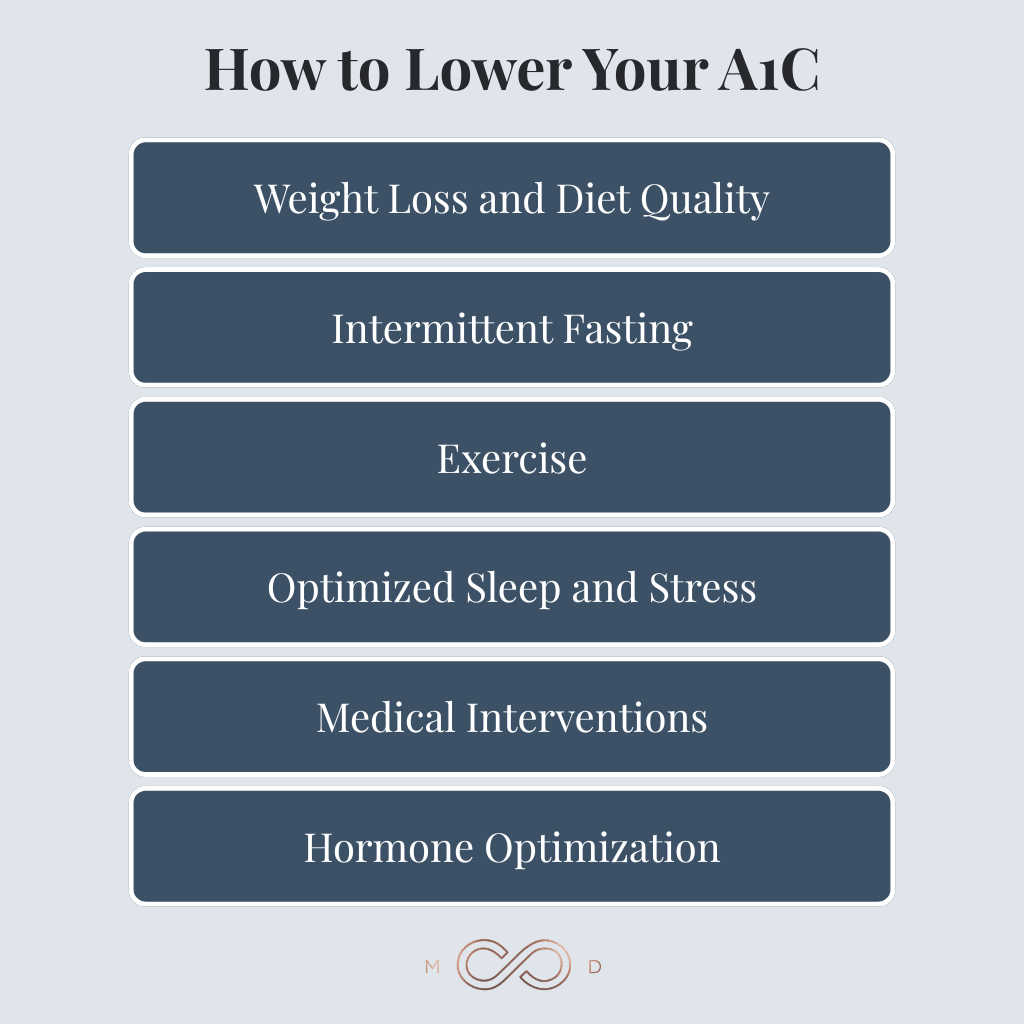For those concerned with their blood sugar and metabolic health, it’s natural to ask: “How long does it take to lower A1C?”
You’ve probably heard all the promises. Drug commercials tout “significant A1C reductions.” Supplements guarantee “blood sugar breakthroughs.” Diet programs claim they’ll “reverse your diabetes in 30 days.”
But here’s what nobody wants to tell you: Lowering your A1C isn’t like flipping a light switch.
The truth is more nuanced — but also more encouraging — than you might think.
What Exactly Is A1C?
Your A1C — also called hemoglobin A1C or HbA1c — reflects your average blood sugar levels over the past three months. It measures the percentage of your hemoglobin molecules with glucose attached to them.
Your red blood cells live for about 90 to 120 days. During that time, they’re floating around in your bloodstream, and glucose molecules are constantly sticking to them. The more sugar in your blood, the more glucose gets stuck to your red blood cells.
This is why A1C is so useful. Unlike a finger-stick blood sugar test that shows your blood sugar right now, A1C gives you a big picture over months, not minutes.
Here’s a simple rundown of what the numbers mean:
- Normal: Below 5.6% or lower
- Prediabetes: 5.7% to 6.4%
- Diabetes: 6.5% or higher
Because A1C reflects a 90-day average, you can’t expect to see dramatic improvements on your lab work after a day or two. While that may feel discouraging, it doesn’t mean your efforts aren’t working (more on this later).
Why Is A1C Important for Health?
Your A1C matters because chronically elevated blood sugar is the gateway to metabolic disease. And metabolic disease is driving our most pressing health crises today.
When your blood sugar stays elevated, your body pumps out more and more insulin to normalize those levels. Eventually, your cells become resistant to insulin’s signal — like a drug addict who needs higher doses to get the same effect.
Insulin resistance creates a cascade of health problems, like fat storage, cravings, cardiovascular risk, and inflammation, to name a few. This is why I consider optimized blood sugar to be the holy grail of health. When you get your blood sugar under control, you get so much of the rest of your health under control, too.
How Long Does It Take to Lower A1C?
So, how long does it take to lower A1C?
The typical timeframe to see meaningful A1C reductions is approximately three months. But that timeline can vary significantly based on your starting point and the strategies you use.
Why Three Months?
Since your red blood cells live for about 90 to 120 days, your body needs time to replace old blood cells with new ones that reflect any changes you’ve made to improve your glucose levels.
You might notice improvements in your daily blood glucose readings within days or weeks. But your A1C test won’t fully capture those changes until your body has cycled through its red blood cells. For this reason, you typically won’t see significant changes in A1C results until after at least three months of consistent effort.
How Much Can Your A1C Drop?
The amount your A1C can decrease depends largely on your starting point and how aggressive your approach is.
Research shows that A1C absolutely can decrease with lifestyle and other interventions, and that it tends to decrease more in people with higher levels, which makes sense — the higher your initial A1C, the more room you have for improvement.
If your A1C is 9% or higher, then meaningful lifestyle changes might result in a drop of 1 to 2%. And if you’re starting at 6%, you might see a reduction of 0.3 to 0.5%.
Both changes are important. Remember that even a modest reduction of 0.5% is clinically significant when it comes to A1C. Don’t dismiss small improvements. They matter enormously for your long-term metabolic health.
What Influences Your A1C Timeline?
Several factors affect how quickly your A1C will drop:
- Your starting A1C level matters because higher initial levels tend to decrease faster.
- Consistency of your efforts is everything. Sporadic adherence produces sporadic results.
- Weight loss is powerful. Losing even 2% to 5% of body weight can reduce A1C, and losing 5% to 10% catapults your chances of lowering A1C by at least 0.5%.
- Your individual metabolic response varies based on your unique health conditions, genetics, and metabolism.
How to Lower Your A1C
Now that you understand how long it takes to lower A1C, let’s talk strategy. What actions can you take to make a meaningful difference?
Weight Loss and Diet Quality
If you want to lower your A1C, weight loss is absolutely helpful. However, you’ll need to focus on achieving normal blood sugar levels, not just counting calories.
Nothing raises your blood sugar faster than carbohydrates, especially refined carbs. It’s helpful to steer clear of white bread, crackers, chips, and pastries (and, of course, anything sugary).
Instead, focus on whole, real foods, especially:
- Healthy fats like avocado, almonds, and wild-caught salmon that provide sustained energy without spiking glucose.
- High-fiber foods like non-starchy vegetables that slow glucose absorption.
- Lean proteins like eggs and grass-fed beef that promote satiety and stable blood sugar.
The vast majority of highly processed foods not only spike your blood sugar and promote high insulin but also are designed to keep you eating more than you should. To avoid this pitfall as much as possible, I suggest remembering one simple rule: If it wasn’t food 120 years ago, it isn’t food today.
Intermittent Fasting
Intermittent fasting has emerged as a powerful tool for improving A1C levels.
By extending the periods when you’re not eating, you give your pancreas (which produces insulin) a break and allow your cells to regain their sensitivity to insulin.
Recent research on this has been impressive. For example, one study showed time-restricted eating (16 hours for fasting, 8 hours for eating) over six months produced greater weight loss than calorie restriction and equal reductions in A1C. Additionally, participants in the fasting group found their regime easier to adhere to than did the calorie restriction group.
Personally, I’ve found daily time-restricted eating to be a sustainable and highly effective weapon in my arsenal against insulin resistance and diabetes. For most people, this can be as simple as skipping breakfast. Just stop eating by 8 p.m. after dinner and wait to break your fast until lunch the next day. Most of the work happens while you sleep!
Exercise: The Natural Blood Sugar Regulator
Besides insulin, exercise is the only other mechanism your body has to lower blood sugar.
- Strength training builds metabolic resilience. Muscle tissue is metabolically active and continues burning glucose even at rest. Aim for strength training two to three times per week.
- Cardiovascular exercise improves insulin sensitivity. You don’t need to run marathons. Just find movement you enjoy and do it consistently.
Optimized Sleep and Stress
Sleep deprivation is a significant risk factor for developing insulin resistance and diabetes.
When you consistently get less than seven hours of quality sleep, your hormonal environment becomes hostile to healthy glucose metabolism. Cortisol rises, insulin sensitivity drops, and blood sugar control becomes difficult.
The same goes for chronic stress. Elevated cortisol directly suppresses insulin sensitivity.
Medical Interventions
Sometimes lifestyle changes need pharmaceutical support, and that’s okay.
Metformin is the gold standard medication for improving insulin sensitivity. It’s generally safe, well-tolerated, and doesn’t cause dangerous low blood sugar episodes.
GLP-1 agonists, like Ozempic, Mounjaro, and a host of other brand names, represent a breakthrough in tools that can turn the metabolic ship around. They improve insulin sensitivity, slow gastric emptying, and reduce appetite, creating the perfect environment for blood sugar control, A1C reductions, and sustainable weight loss.
GLP-1 results can be dramatic, but they’re most effective when accompanied by lifestyle changes. In fact, their effects make altering eating habits easier for most people, creating the perfect opportunity to adopt changes that will make all those benefits stick once they come off the medication.
Are GLP-1 drugs perfect? No. Every drug has side effects, and some can be serious. But the effects of prolonged metabolic disease are serious, too. So, for people struggling with elevated A1C despite their best lifestyle efforts, I suggest weighing the potential risks and rewards of GLP-1 medications in conversation with a doctor you trust.
Hormone Optimization
Hormone balance also plays a role in metabolic health.
As we age, testosterone levels decline. Since testosterone helps build lean muscle while promoting fat loss, its decline can contribute to insulin resistance.
Consequently, restoring healthy testosterone levels (for both men and women) can help your body recover its insulin sensitivity.
What You Can Do Starting Today
To get started while you await your next A1C check, you can take these concrete steps:
- Track your daily blood glucose. Consider a continuous glucose monitor for real-time feedback.
- Implement time-restricted eating. Start with a fasting window you can sustain (12 hours minimum). Then, gradually extend it to 14 or 16 hours.
- Take a 10-minute walk after meals. When your muscles contract, they pull glucose directly from your bloodstream. This is why a 10- to 20-minute walk after meals dramatically blunts blood sugar spikes.
- Focus on food quality over calorie counting. Choose whole foods that promote normalized blood sugar.
- Prioritize seven-plus hours of sleep. If sleep apnea or other nighttime issues might be interrupting your rest, get a sleep study done. Sleep problems can significantly worsen metabolic problems.
- Find your team. Work with a medical team who listens to your concerns, shares your goals, and understands metabolic health.
How Long Does It Take to Lower A1C: The Bottom Line
Lowering your A1C requires patience and consistency, but meaningful improvements are absolutely achievable within a three-month timeframe.
You won’t see results overnight. The biological reality of how A1C works means you need to give your body time to replace old red blood cells with new ones.
But here’s the encouraging part: Nearly everyone’s insulin resistance (and diabetes!) is improvable, perhaps even reversible.
In nearly 20 years of treating patients with elevated A1Cs, I haven’t had one person whose condition couldn’t improve. Not one.
With the right strategy, support, and commitment, you might be surprised by what’s possible in just a few months.


Dr. Aaron Wenzel is a concierge physician specializing in the care of fast-moving entrepreneurs, executives, and public figures in the Nashville, TN area. Dr. Wenzel’s diverse life experience and extensive training in family medicine, emergency care, nutrition, and hormone replacement therapies give him the unique platform to provide unmatched care for his patients.








